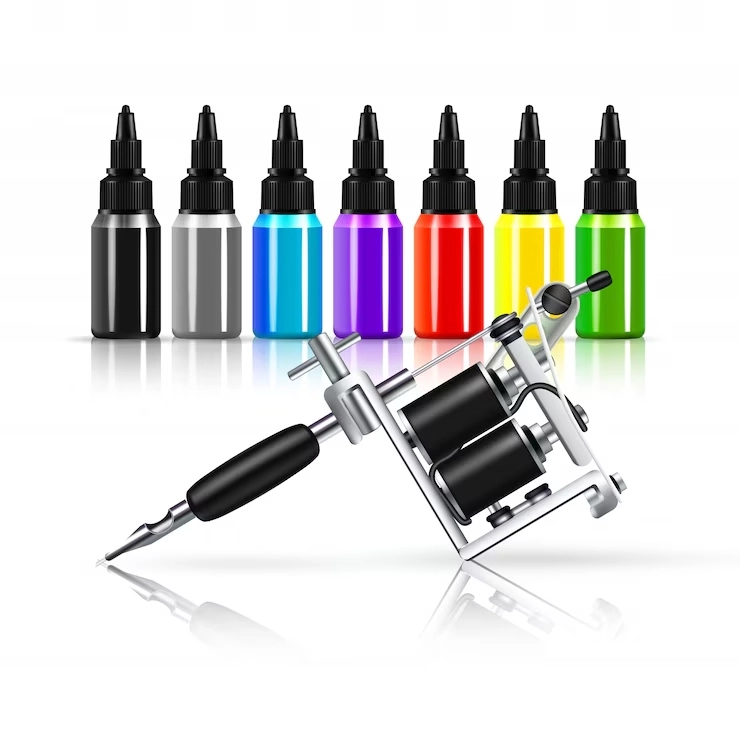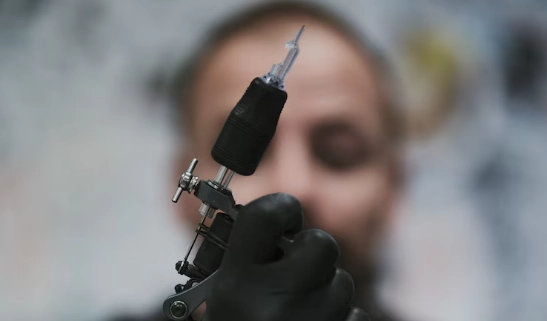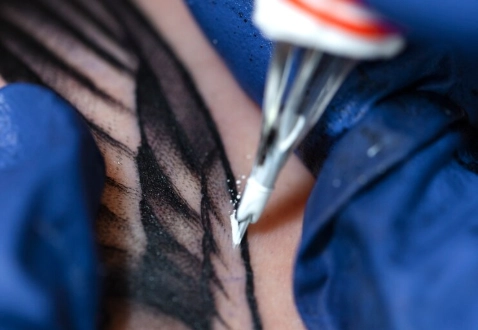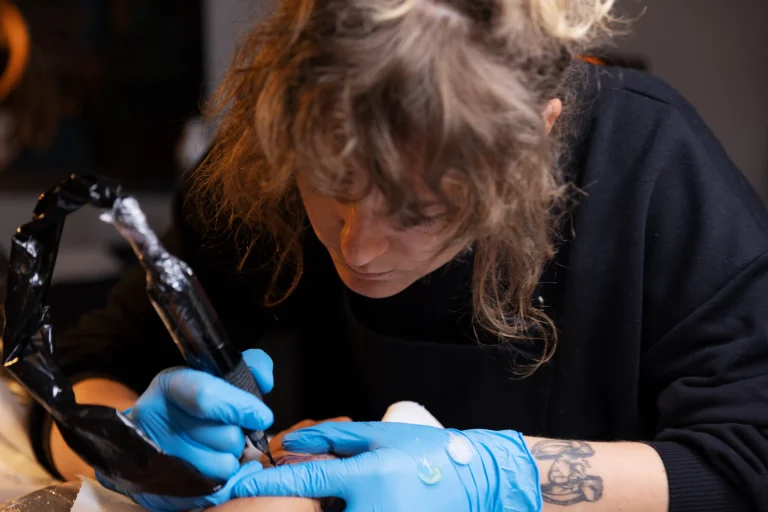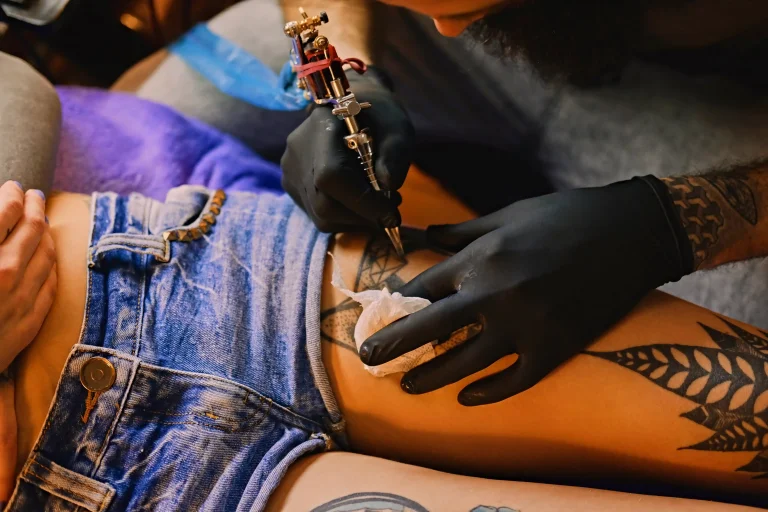Picking the ideal tattoo tool is important for any artist. Rotary and traditional devices provide unique experiences. Each suits different styles and likes. This guide compares how they work, their performance, and their care needs. It helps you choose the best fit. Check out YABA TATTOO’s offerings for top-quality tools.
What Are the Key Differences Between Rotary and Traditional Tattoo Machines?
Knowing the main differences between rotary and traditional tattoo tools is key to choosing wisely. These tools differ in how they function, their weight, and their comfort. These factors affect how they work for different tattoo tasks. Let’s look at these differences closely.
The Mechanism of Rotary Tattoo Machines
Rotary tattoo tools use a motor to work. A small motor moves the needle in a smooth, round patternCertified by YABA TATTOO’s rotary tattoo machine collection offers tools with adjustable needle lengths, like 2.5mm to 4.5mm. This makes them flexible. They also shake less. This reduces hand tiredness during long work. The design keeps these tools quiet and steady. They’re great for artists who value accuracy.
How Traditional Tattoo Guns Operate
Traditional tattoo tools, or coil devices, work differently. Coils use a magnetic field to move the needle fast. This creates a buzzing sound. These tools have less adjustable needle lengths. They’re built for specific tasks, like outlining or shading. They shake more, though. This can affect comfort over time. Traditional devices are strong and steady for bold results. But they may need more skill to use well.
Comparing Weight and Ergonomics of Both Types
Weight and comfort greatly impact an artist’s ease and work. Rotary tools are light, weighing 100 to 200 grams. They have slim, pen-like grips. These are easy to hold. They cause less tiredness during long sessions. Traditional devices are heavier, at 200 to 400 grams. They’re bulkier and need a firmer grip. This can tire hands faster. Rotary tools, like tattoo pen machines, feel more comfortable. Traditional devices suit artists used to their weight.
Which Tattoo Machine Suits Different Styles and Techniques?
The tattoo tool you pick should match your art style and methods. Rotary and traditional devices each have strengths. They fit specific uses better. Let’s see how they work for different styles.
Rotary Machines for Versatile Styles
Rotary tools are very flexible. They handle many tattoo styles well. Their smooth work and exact needle control shine in delicate designs. These include simple or text tattoos. They also adjust needle lengths easily. This helps pack bright colors well. Plus, their low shaking creates soft blends. This is great for realistic or watercolor tattoos. Artists who love trying new styles often choose rotary tools. They handle many tasks easily.
Traditional Guns for Bold Lines and Shading
Traditional tattoo tools are loved for their strength and steadiness. Their fast needle movement makes sharp, thick outlines. These are perfect for old-school or tribal tattoos. They also create dense shading. This suits classic or modern traditional styles. Many artists pick traditional devices for their classic feel and sound. These connect to tattoo culture. They’re best for artists focusing on bold, strong designs.
Choosing Based on Your Artistic Preferences
Your art likes should guide your choice. If you enjoy trying different styles, a rotary tool gives freedom. It works for many tasks. If you focus on classic tattoo styles, a traditional device may fit better. Also, think about how the tool feels in your hand. This matters for long work sessions. Trying both types, if you can, helps you find what works for your style.
How Do Maintenance and Durability Compare Between the Two Options?
Care and lasting power are vital when buying a tattoo tool. Both rotary and traditional devices have unique needs and lifespans. These affect their long-term worth.
Maintenance Requirements of Rotary Machines
Rotary tools need little care. You wipe the outside and clean grips after each use. Motors rarely need inside cleaning. Some models need motor oil now and then. But many are sealed for ease. Swapping needle parts is quick. This cuts downtime. Their simple build makes rotary tools easy for busy artists.
Caring for Traditional Tattoo Guns
Traditional devices need more care. You must tune coils and springs often. This keeps them working well. Tuning may need expert help. You also take them apart to clean. This prevents ink buildup. Parts like springs and screws wear out fast. They need regular replacing. Good care makes a traditional device last longer. But it takes more time and skill.
Longevity and Wear of Each Machine Type
Lasting power differs between the two. Rotary tools have fewer moving parts. This makes them resist wear. They last 5 to 10 years with good care. Tools like YABA TATTOO’s wireless tattoo machines use strong materials. These add to their life. Traditional devices have more mechanical parts. They may need fixes after 3 to 5 years of heavy use. High-quality ones last longer, though. Rotary tools often stay reliable for steady work over time.
What Should You Consider When Making Your Final Choice?
Picking between a rotary and traditional tattoo tool means weighing several things. These go beyond style and care. Money, noise, and client ease all matter in your choice.
Budget Considerations for Beginners and Professionals
Money matters for artists at any level. Rotary tools cost $50 to $500 for beginners. Pro models can hit $500 to $2,000. Affordable ones work for new artists. Traditional devices start at $100 to $300. Top ones reach $1,000 or more. They may need extra gear, like power supplies. This raises costs. Rotary tools often need fewer fixes. This saves money over time. New artists may pick a cheap rotary tool. Pros may buy premium ones for lasting power.
Evaluating Noise Levels During Operation
Noise affects artists and clients. Rotary tools are quiet. They make a soft hum. This keeps the studio calm. Traditional devices are loud. They buzz strongly. Some clients find this scary. Others like it for its real feel. If keeping clients relaxed matters, rotary tools are better.
Client Comfort and Experience with Each Machine
Client ease can boost satisfaction and return visits. Rotary tools shake less. Their smooth work causes less skin irritation. This suits sensitive clients or long sessions. Traditional devices shake more. This may discomfort clients, especially for detailed or long tattoos. Picking a tool that reduces discomfort can build your name as a client-friendly artist.
Why Choose YABA TATTOO as Your Trusted Supplier?
YABA TATTOO is a top supplier of great tattoo tools. It serves artists worldwide. With a focus on new ideas and client happiness, YABA TATTOO helps you find the perfect tool for your art.
Overview of YABA TATTOO’s Product Range
YABA TATTOO, based in China, is known for its wide tool selection. It offers simple kits for beginners. It also has pro-grade devices. Their focus on quality and performance makes them a trusted pick for tattoo pros.
High-Quality Rotary Machines Offered by YABA TATTOO
YABA TATTOO’s rotary tools are built for accuracy and lasting power. They have light, comfy designs. These are easy to use. They offer adjustable needle lengths. This helps with many tattoo styles. Their strong motors ensure steady work. Check out their rotary tattoo machine collection for modern options.
Reliable Traditional Tattoo Guns from YABA TATTOO
YABA TATTOO also provides strong traditional devices. These have powerful coils for bold outlines and shading. They use lasting parts for long use. They’re also customizable for skilled artists. Their traditional tools are great for classic tattoo styles.
Commitment to Innovation and Customer Satisfaction
YABA TATTOO stands out for its dedication. It tests every tool carefully. This ensures they’re reliable. It uses the latest tech, like wireless features and strong motors. It also offers expert advice. This helps artists pick the best gear. With YABA TATTOO, you gain a partner in your art journey.
Conclusion
Choosing between a rotary and traditional tattoo tool depends on your style, budget, and priorities. Rotary tools offer flexibility, easy care, and client ease. Traditional devices shine in bold, classic designs. By knowing their differences in how they work, their performance, and their upkeep, you can pick the best tool for your art. Visit YABA TATTOO to explore their range and improve your tattooing experience.
FAQs
What Are the Pros and Cons of Rotary Machines vs. Traditional Guns?
Rotary tools are quiet and light. They work for many styles and need little care. But they may feel less strong for heavy shading. Top models can cost more. Traditional devices are great for bold outlines and shading. They have a classic feel and cheaper starter options. Yet, they’re noisy and shake more. They also need frequent tuning and care.
Can Beginners Use Both Types of Tattoo Machines Effectively?
Yes, beginners can use both. Rotary tools are often easier, though. Their simple work and low shaking forgive mistakes. They help learn basic skills. Traditional devices need more skill to tune and control. New artists may need extra practice for steady results.
How Do I Know Which Machine Is Best for My Needs?
Think about your tattoo style, budget, and comfort. Pick rotary for flexibility and client ease. Choose traditional devices for bold, classic styles. Try tools if you can. Also, explore YABA TATTOO’s tattoo machine range for quality options that fit your needs.


